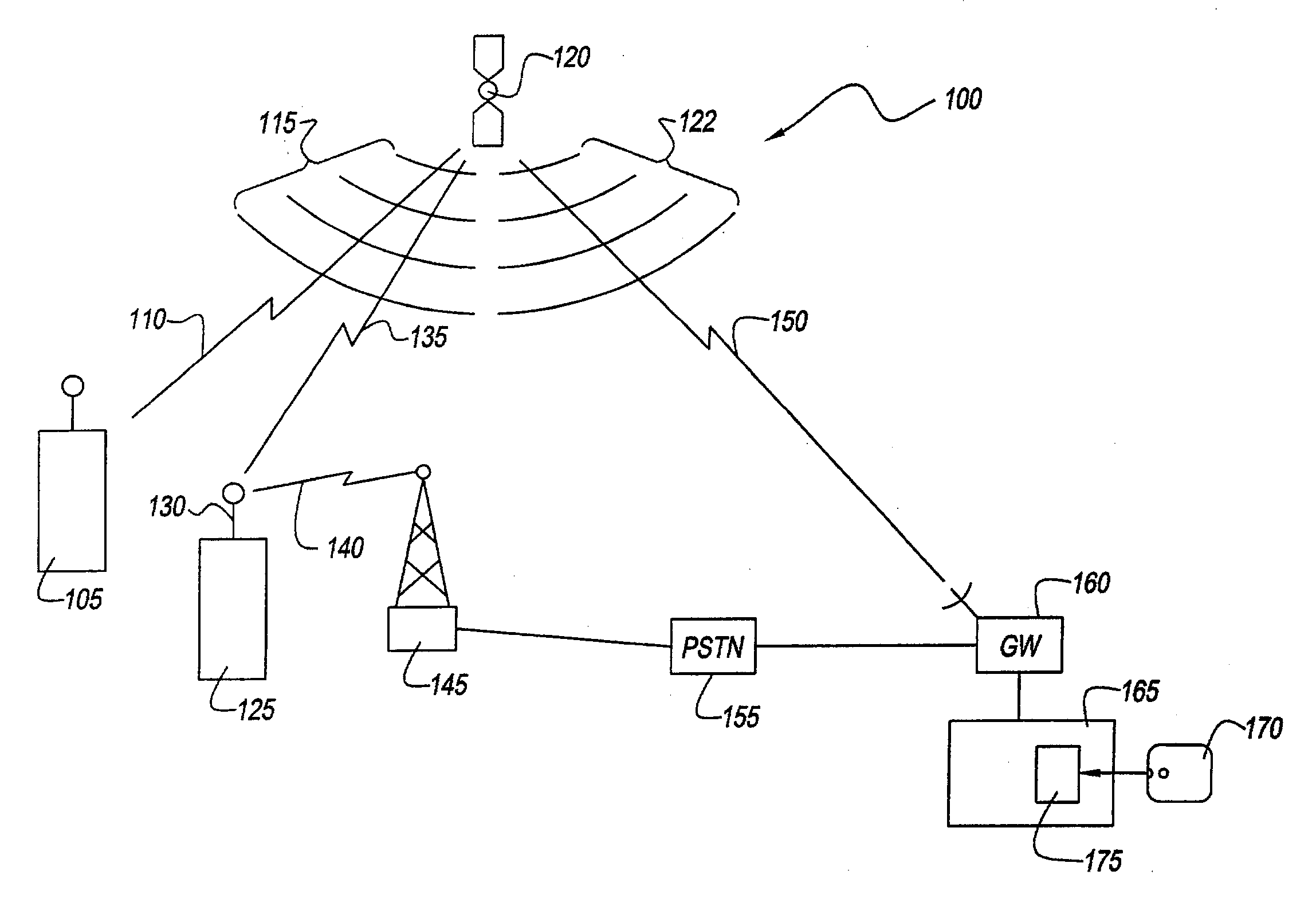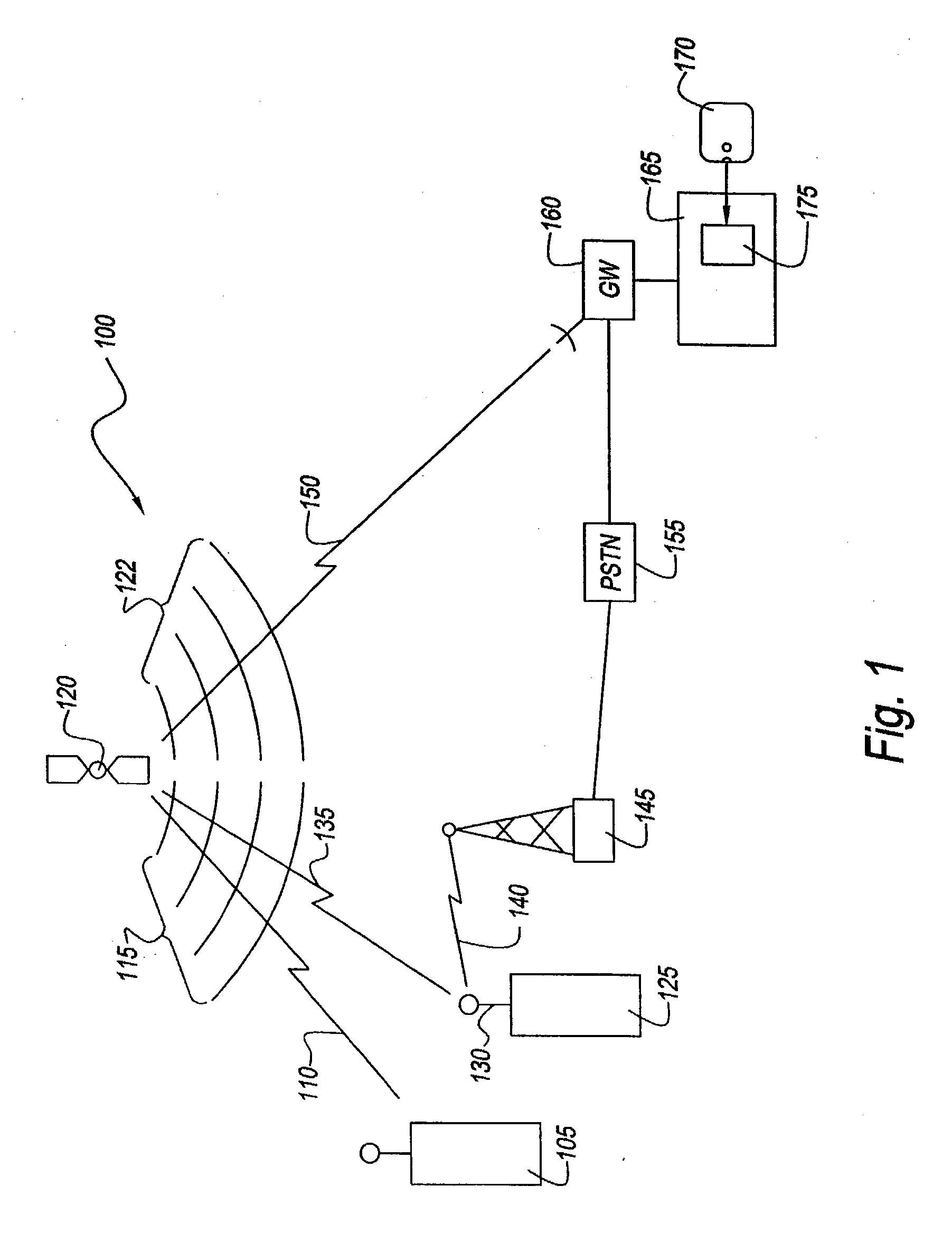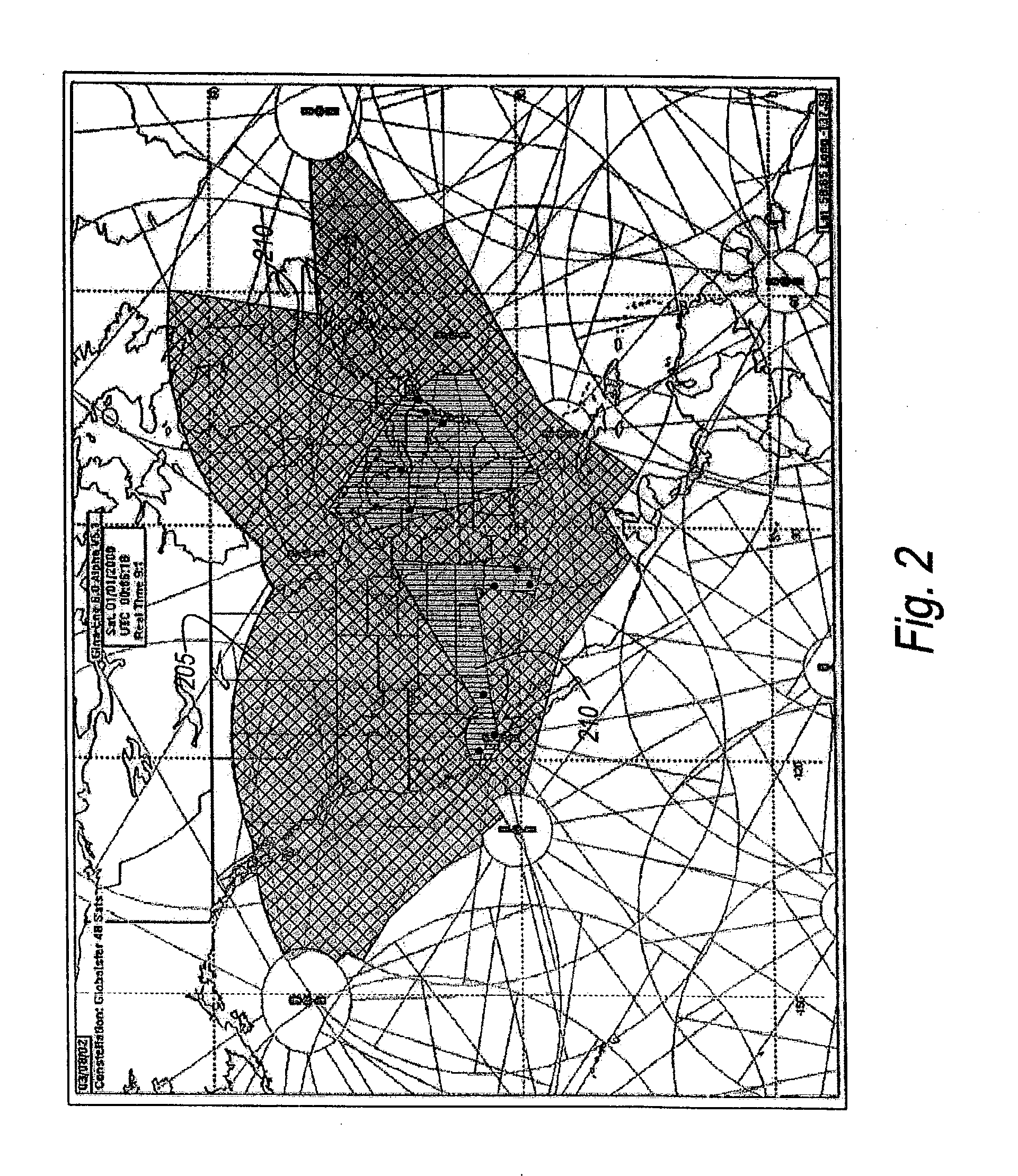Resource allocation to terrestrial and satellite services
a technology for terrestrial and satellite services, applied in the direction of network traffic/resource management, satellite communication transmission, network topologies, etc., can solve the problems of interference with the receiving tbs and satellite being denied from using the frequency
- Summary
- Abstract
- Description
- Claims
- Application Information
AI Technical Summary
Problems solved by technology
Method used
Image
Examples
Embodiment Construction
[0030] FIG. 1 is a functional illustration of a communications system 100 that includes a satellite radio service system (hereinafter "the satellite system") and a terrestrial radio service system (hereinafter "the terrestrial system"). The satellite system includes a handset 105, a satellite 120 and a gateway 160. The terrestrial system includes a cell phone 125 and a cellular tower 145.
[0031] Satellite 120 has an antenna with a propagation pattern, also know as a footprint, such that a beam 115 from satellite 120 covers handset 105. Another beam 122, usually in a different frequency band, covers gateway 160. Handset 105 can be a transmitter, a receiver or a transceiver. Via an RF link 110 within beam 115, handset 105 is in direct RF communication with satellite 120, and via an RF link 150, satellite 120 is in communication with gateway 160.
[0032] Cell phone 125 has a non-directional antenna, i.e., omni-directional antenna 130. Through omni-directional antenna 130, and via an RF li...
PUM
 Login to View More
Login to View More Abstract
Description
Claims
Application Information
 Login to View More
Login to View More - R&D
- Intellectual Property
- Life Sciences
- Materials
- Tech Scout
- Unparalleled Data Quality
- Higher Quality Content
- 60% Fewer Hallucinations
Browse by: Latest US Patents, China's latest patents, Technical Efficacy Thesaurus, Application Domain, Technology Topic, Popular Technical Reports.
© 2025 PatSnap. All rights reserved.Legal|Privacy policy|Modern Slavery Act Transparency Statement|Sitemap|About US| Contact US: help@patsnap.com



